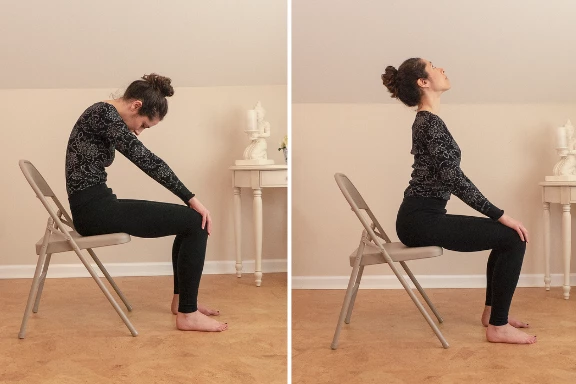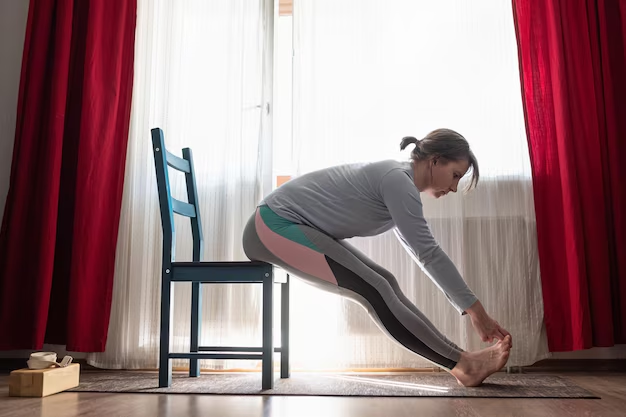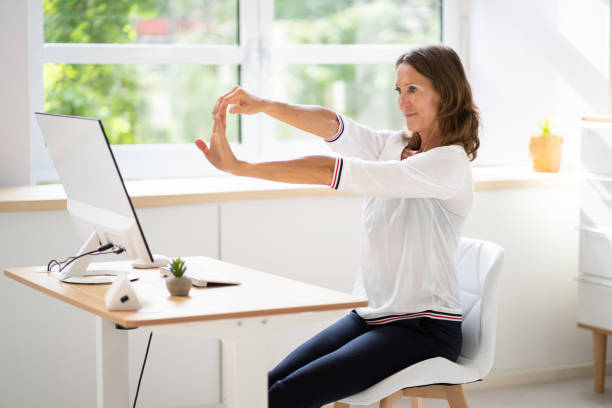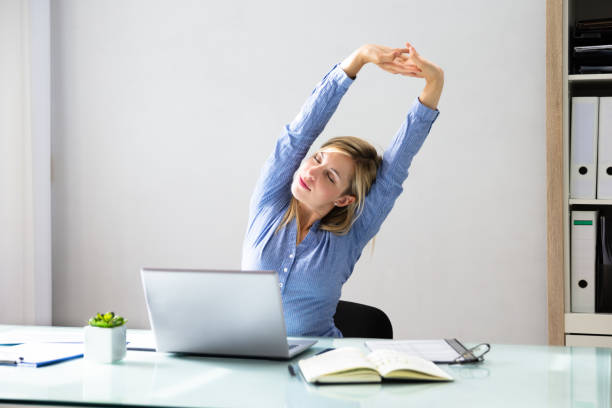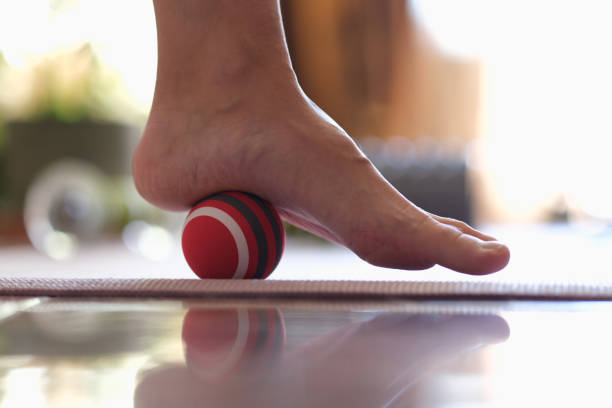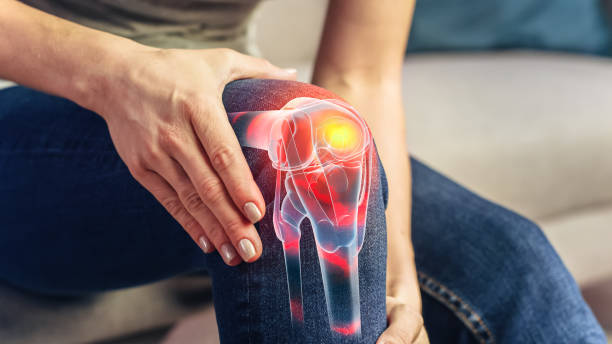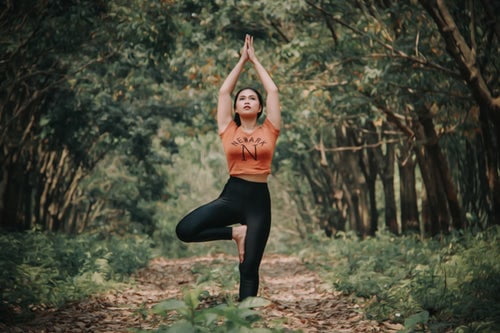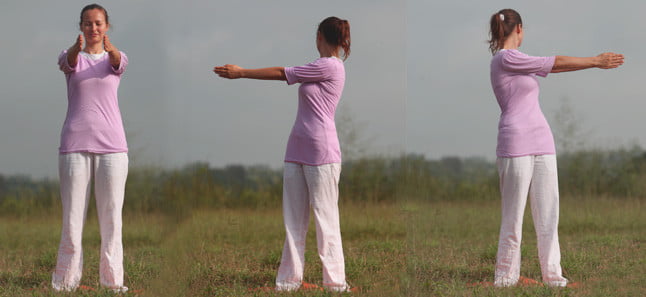Incorporating simple yoga stretches into your office routine, even while seated at your desk, can greatly improve your comfort and focus. Here are some easy-to-follow yoga stretches that office workers can perform without needing to leave their desks. So, see below simple yoga stretches for office workers at desk.
Table of Contents
Simple Yoga Stretches For Office Workers at Desk:
Working long hours at a desk can lead to muscle stiffness, poor posture, and fatigue, especially in the neck, shoulders, back, and wrists. Sitting for extended periods without moving can cause discomfort, and over time, this can affect your productivity and overall well-being. Yoga offers a solution by promoting flexibility, circulation, and relaxation.
Sure! Here’s a more detailed guide on how to perform these yoga stretches for office workers. See below the simple yoga stretches for office workers at desk.
1. Seated Cat-Cow Stretch:
The Seated Cat-Cow Stretch is a gentle way to mobilize your spine and relieve tension in your back, shoulders, and neck. By alternating between arching and rounding your back, you engage both the front and back muscles of the torso, improving flexibility and promoting better posture throughout the day.
How To Do It:
- Sit tall in your chair with your feet flat on the floor and your hands resting on your knees.
- Inhale: Arch your back slightly, lift your chest, and look upward (Cow Pose).
- Exhale: Round your back, tuck your chin toward your chest, and pull your belly button in (Cat Pose).
- Continue to flow between these two movements for 5–10 breaths, inhaling on the arch and exhaling on the round.
2. Neck Stretches:
Neck stretches help release the tightness that accumulates from long hours of sitting and screen time. This simple stretch targets the neck and upper shoulders, improving circulation and reducing stiffness. It’s a quick and effective way to combat tension headaches and promote relaxation, leaving you feeling more focused.
How To Do It:
- Sit tall with your shoulders relaxed.
- Slowly tilt your right ear toward your right shoulder and hold for 3–5 deep breaths.
- For a deeper stretch, gently press your left hand down on your lap and apply light pressure with your right hand on your head.
- Switch to the other side, lowering your left ear toward your left shoulder.
3. Seated Forward Fold:
The Seated Forward Fold is a relaxing stretch for the lower back, hamstrings, and hips. By hinging at the hips and folding forward, you encourage flexibility in the legs and spine while releasing stress. This pose can also help calm the mind, making it a great stress-reliever during a busy workday.
How To Do It:
- Sit tall with your feet flat on the floor and your legs extended straight ahead.
- Inhale to lengthen your spine, then exhale and slowly fold forward from your hips, reaching for your toes or shins.
- Let your head drop toward your knees, relaxing your neck.
- Hold for 5–10 breaths, then slowly roll back up to a seated position.
4. Seated Spinal Twist:

The Seated Spinal Twist is an excellent way to improve spinal flexibility and relieve tension in the back and shoulders. This twist not only targets the spine but also massages the internal organs, aiding digestion. It’s a great way to invigorate the body and release any built-up stiffness from sitting.
How To Do It:
- Sit tall in your chair, feet flat on the floor.
- Inhale and lengthen your spine, then exhale as you twist to your right, placing your left hand on your right knee and your right hand on the back of your chair.
- Keep your hips grounded, and look over your right shoulder.
- Hold for 3–5 breaths, then gently return to center and repeat on the other side.
5. Shoulder Shrugs:
Shoulder shrugs are a simple yet effective way to release tension in the shoulders and neck, areas that often become tight from sitting and poor posture. By lifting and lowering the shoulders, you promote relaxation and improve circulation, helping to alleviate discomfort caused by prolonged sitting at a desk.
How To Do It:
- Sit upright with your arms relaxed at your sides.
- Inhale, lift your shoulders toward your ears as high as you can.
- Exhale, and slowly lower them back down.
- Repeat for 5–10 rounds, focusing on releasing any tightness.
6. Wrist and Finger Stretch:
Wrist and finger stretches are essential for anyone who spends a lot of time typing or using a mouse. This stretch targets the forearms, wrists, and fingers, promoting flexibility and circulation. It helps reduce the risk of repetitive strain injuries and keeps the hands relaxed and functional during long work hours.
How To Do It:
- Extend your right arm in front of you with your palm facing upward.
- Gently use your left hand to pull back the fingers of your right hand, stretching the wrist and forearm.
- Hold for 5–10 breaths, then switch sides.
- Optionally, you can also stretch your fingers by gently pulling back each finger to stretch the joints.
7. Seated Side Stretch:
The Seated Side Stretch is a wonderful way to release tension in the sides and stretch the muscles of the torso. By reaching overhead and leaning to the side, you elongate the muscles in the torso, relieving any tightness from sitting and encouraging a deeper breath, which can help refocus the mind.
How To Do It:
- Sit tall in your chair with your feet flat on the floor.
- Inhale, reach your right arm overhead, and exhale as you lean to the left, stretching the right side of your body.
- Hold for 3–5 breaths, then return to center.
- Repeat the stretch on the other side.
8. Ankle Rolls:
Ankle rolls are a simple yet effective stretch that improves blood circulation in the lower legs and ankles. By gently rotating the ankles in circles, you stimulate the flow of blood and reduce stiffness, making it an easy stretch to do when you feel a lack of movement in your lower body.
How To Do It:
- Sit with your feet flat on the floor.
- Lift your right foot off the ground slightly and rotate your ankle in circles, first in one direction for 10–15 seconds.
- Switch directions and repeat for 10–15 seconds.
- Repeat with the left foot.
9. Chest Opener:
The Chest Opener is a great way to combat the hunched posture that often results from sitting at a desk. By interlacing your fingers behind your back and opening your chest, you stretch the front body and shoulders, counteracting the forward slouch and improving overall posture while also relieving tightness.
How To Do It:
- Sit tall with your feet flat on the floor and your shoulders relaxed.
- Interlace your fingers behind your back, and straighten your arms.
- Inhale as you gently lift your hands away from your back, opening up your chest.
- Hold for 5–10 breaths, then release and relax.
10. Seated Leg Extensions:
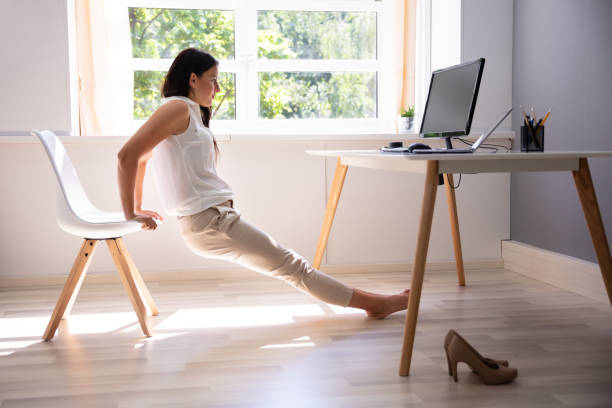 Seated Leg Extensions are a simple yet effective way to improve circulation in the legs and strengthen the thigh muscles. This stretch helps reduce swelling and discomfort from sitting too long, while also engaging the leg muscles. It’s perfect for keeping the lower body active and energized throughout the day.
Seated Leg Extensions are a simple yet effective way to improve circulation in the legs and strengthen the thigh muscles. This stretch helps reduce swelling and discomfort from sitting too long, while also engaging the leg muscles. It’s perfect for keeping the lower body active and energized throughout the day.
How To Do It:
- Sit tall in your chair with your feet flat on the floor.
- Inhale, extend your right leg straight out in front of you, keeping your knee straight.
- Hold for 3–5 breaths, then lower the leg back down.
- Repeat with the left leg.
Conclusion:
Incorporating these simple yoga stretches into your workday can make a significant difference in reducing stress, improving your posture, and preventing muscle strain. The best part is that these stretches are easy to perform without needing to leave your desk, making them perfect for office workers. By taking just a few minutes throughout the day to stretch and move your body, you’ll feel more energized, focused, and comfortable. So, take a break, stretch it out, and experience the benefits of yoga in the workplace!
FAQ:
Q. How often should I do these stretches?
A. It’s ideal to stretch every hour to prevent stiffness and discomfort. If you can, take a few minutes for each stretch every 30 to 60 minutes during your workday.
Q. What if I can’t reach my toes in the Seated Forward Fold?
A. That’s okay! Just reach as far as you comfortably can, whether it’s your shins or thighs. Over time, your flexibility will improve, and you may be able to reach further.
Q. Should I hold my breath while stretching?
A. No, always focus on breathing deeply and slowly throughout each stretch. This helps your body relax and allows you to go deeper into the stretch safely.
Q. Can I do these stretches if I have back pain or a medical condition?
A. If you have any pre-existing medical conditions, injuries, or chronic pain, it’s best to consult with a healthcare provider before starting a new exercise routine. They can help you tailor these stretches to your specific needs.
These stretches are simple yet effective tools for staying physically and mentally refreshed during long work hours. Regularly practicing them can help you avoid the common aches and pains associated with sitting all day.


